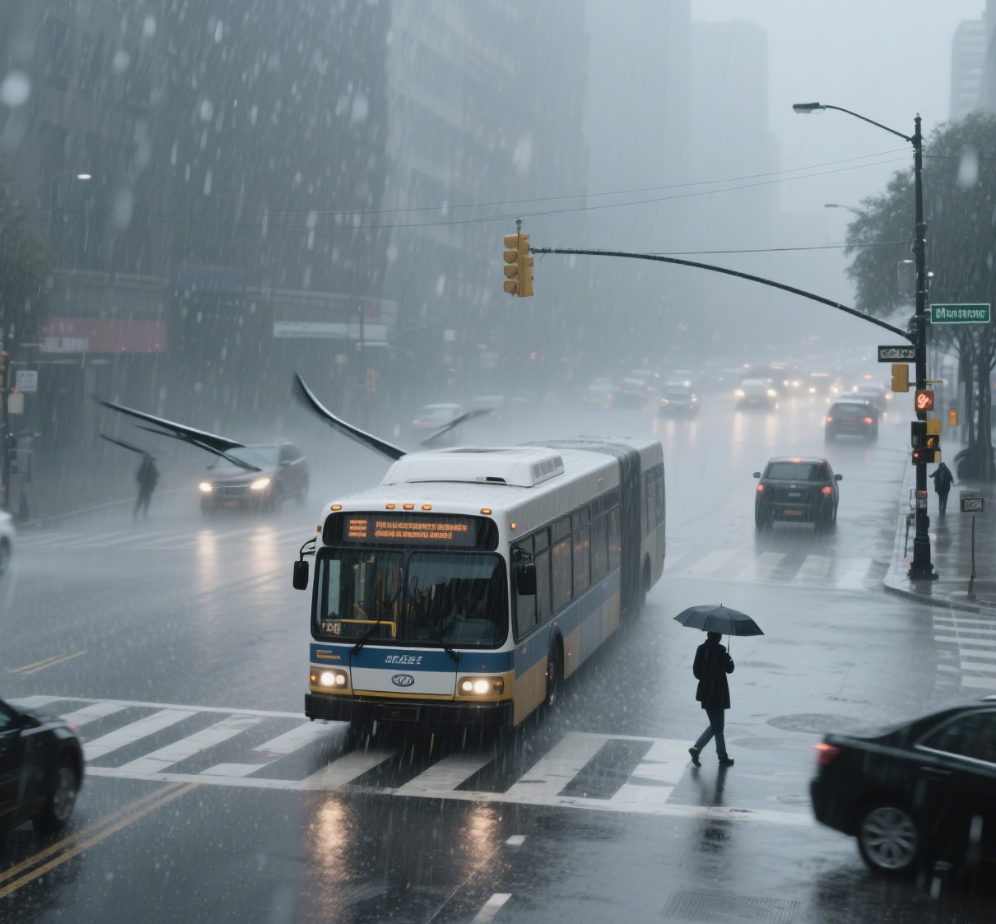Introduction
Traffic monitoring systems must operate reliably under all weather conditions. Traditional optical sensors such as cameras and LiDAR often fail in rain, fog, snow, or dust, leading to inaccurate traffic data and system inefficiencies. Millimeter-wave (mmWave) radar offers a robust solution, capable of detecting vehicles, pedestrians, and cyclists even in challenging environmental conditions. Understanding how weather impacts radar performance is critical for deploying reliable traffic monitoring systems.
1. Rain: Signal Attenuation and Reflection
Rain affects radar signals in two primary ways:
-
Attenuation – Raindrops absorb part of the radar signal, reducing effective detection range. A radar capable of detecting vehicles up to 300 meters in clear conditions may see its range drop to 200 meters in heavy rain.
-
Multipath Reflection – Raindrops on the road or nearby structures can reflect radar waves, producing “ghost targets.” Advanced signal processing filters out these reflections, maintaining detection accuracy.
Example: Linpowave’s V300 radar uses Doppler filtering and multi-frame processing to maintain consistent detection in heavy rain, ensuring accurate vehicle counts and lane-level monitoring.
2. Fog: Minimal Impact on mmWave Radar
Fog droplets are typically smaller than the radar wavelength, causing negligible scattering. As a result:
-
Detection range remains almost unchanged.
-
Small targets, such as motorcycles or pedestrians, are reliably tracked.
This gives radar a distinct advantage over optical sensors in low-visibility conditions, ensuring uninterrupted traffic monitoring during foggy mornings or industrial areas with frequent haze.
3. Snow: Challenges and Mitigation
Snow can affect radar in two ways:
-
Wet Snow Attenuation – Wet snow absorbs signal energy, slightly reducing range.
-
Accumulation on Sensors – Snow buildup on the radar housing may block or scatter signals.
Mitigation strategies:
-
Installing radars with hydrophobic coatings or heating elements to prevent accumulation.
-
Temporal filtering algorithms differentiate transient reflections from actual vehicles.
4. Dust and Sand: Urban and Desert Considerations
Airborne particles can scatter radar waves, especially in areas with frequent dust storms or construction. mmWave radars manage this via:
-
Doppler filtering – Distinguishing stationary airborne particles from moving vehicles.
-
High update rates – Averaging multiple frames to reduce noise from dust clouds.
This ensures consistent lane-level detection and accurate traffic flow statistics.
5. Design and Deployment Considerations for All-Weather Reliability
-
Sensor Placement – Mounting height and tilt angle reduce reflections from ground or nearby structures.
-
Antenna Configuration – Wider MIMO arrays improve angular resolution, helping separate vehicles in adjacent lanes even in poor weather.
-
Signal Processing – CFAR (Constant False Alarm Rate) detection and trajectory continuity analysis minimize false positives from weather-induced noise.
-
Redundancy – Integrating radar with cameras or LiDAR for cross-validation ensures maximum reliability.
6. Real-World Applications
-
Urban Intersections – Detect vehicles and pedestrians accurately even in heavy rain, fog, or snow.
-
Highways – Maintain lane-level traffic flow monitoring during snowstorms or sandstorms.
-
Smart Traffic Signals – Ensure signals respond only to real vehicles, reducing congestion caused by false detections.
7. Linpowave Radar: Example Deployment
Linpowave’s radar systems are designed for accuracy across a wide detection range, from 0.4 meters up to 300 meters. Key features supporting all-weather reliability include:
-
High-precision velocity measurement for distinguishing dynamic from static objects.
-
Robust performance in diverse weather conditions.
-
Low false alarm rates for lane-level monitoring.
For more details, see the V300 radar product page.
Conclusion
Weather significantly impacts traditional traffic monitoring sensors. mmWave radar overcomes these challenges through physics-based advantages, advanced signal processing, and robust hardware design. By accounting for rain, fog, snow, and dust in both design and deployment, traffic authorities can achieve reliable, continuous, and safe monitoring. Products like Linpowave V300 radar exemplify how modern mmWave radars maintain accuracy in all-weather conditions, supporting smarter, safer urban mobility.



